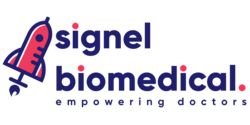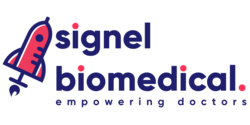
Integrating digital technology in Dental practices
In an age where technology permeates every aspect of our lives, from communication to entertainment, healthcare too has undergone a significant digital transformation. One field that has embraced this change with open arms is dentistry. Traditional dental practices are now integrating state-of-the-art digital technologies to enhance patient care, streamline processes, and achieve better outcomes. Let's delve into how digital technology is reshaping the landscape of dental practices with this blog .
Understanding Digital Dentistry Tools
Find out the most popular digital dentistry equipments that has revolutionized today’s dental world :
1. Advancements in Augmented Reality and virtual reality applications
The dental practices is likely to feature advancements in augmented reality (AR) and virtual reality (VR) applications like Giant Lazer These applications can be used to enhance patient education, simulate treatment outcomes, and improve the overall dental experience. Also offer interactive educational resources for patients, including videos, animations, and virtual treatment simulations. These tools help patients better understand their oral health conditions, treatment options, and preventive care practices.
2. Digital Imaging: A Clearer Vision
One of the most significant advancements in dentistry is the transition from conventional X-ray films to digital imaging systems.
Digital radiography offers numerous advantages over traditional methods:
With digital imaging, dentists can diagnose conditions more accurately, visualize anatomical structures more clearly, and effectively communicate treatment plans with patients.
Today, digital radiography includes the use of
RadioVisioGraphy(RVG).
Here are some key uses and advantages of RVG :
Choose the most suitable RVG for your dental practice from the top -most brands by gaining insights to their technical specifications :
3. Electronic Health Records (EHRs): Streamlining Patient Management
The adoption of electronic health records (EHRs) has transformed how dental practices manage patient information. EHRs enable dentists to maintain comprehensive digital records of patient histories, treatment plans, and clinical notes securely. This digitization not only eliminates the need for bulky paper files but also facilitates seamless communication between healthcare providers and improves coordination of care. Additionally, EHRs empower patients to access their dental records conveniently and participate more actively in their treatment decisions.
4. Intraoral Camera
The Intraoral Camera assists in better communication between the dentist and the patient. It also enhances patient education by allowing them to see the areas of concern firsthand. With its ability to identify dental issues in their initial stages, the Intraoral Camera is crucial in promoting preventive care and improving overall oral health outcomes. It can be used in various procedures like scaling , restorations , detecting cavities and ulcers in mouth .
Several reputable brands offer high-quality intraoral cameras for dental practices. Some of the best brands include:

5. 3D Scanner
3D Scanner can produce 3D models within minutes. Dentists can now offer patients faster and more precise treatments with the development of 3D scanners .
Here are the ways in which 3D scanners can be used in dentistry :
Start your digital treatment planning with most selling 3D scanners brands such as 3Shape, Carestream Dental , Planmeca.
Click here (www.signelbiomedical.com ) to get assistance in purchasing the best 3Dscanner for your practice .
6. CAD/CAM Technology: Precision in Prosthodontics
Computer-aided design and computer-aided manufacturing (CAD/CAM) technology have revolutionized prosthodontics, allowing for the fabrication of high-quality dental restorations with unparalleled precision and efficiency. With CAD/CAM systems, dentists can design crowns, bridges, and veneers digitally, eliminating the need for messy impression materials and multiple appointments. Patients benefit from same-day restorations, reduced chair time, and restorations that are custom-fitted with exceptional accuracy.

7. Teledentistry: Expanding Access to Care
In an increasingly interconnected world, teledentistry has emerged as a valuable tool for expanding access to dental care, particularly in underserved communities and remote areas. Through secure video conferencing like google meet and digital communication platforms, dentists can remotely assess patients, provide consultations, and offer guidance on oral health concerns. Teledentistry enhances convenience for patients, reduces travel time and expenses, and enables dentists to triage cases efficiently.

8. Dental Practice Management Software
Dental practice management software allows medical professionals to focus more on delivering quality patient care. Moreover, this software provides seamless integration between different departments within the clinic, facilitating better communication and coordination among the dental team.
Cloud-based Dental Software
Dental professionals can easily schedule appointments, store patient records, manage billing and insurance claims, and access their practice’s data from any device with dental software such as : Dentrix , Eaglesoft, practice web , open dental , etc. Moreover, these software systems act as a tool to optimize their processes, enhance patient care, and stay at the forefront of the digital age.
9. AI in Risk Assessment and Treatment Planning
AI in dentistry is revolutionizing risk assessment and treatment planning in dental practices. AI-powered systems can assist in treatment planning by suggesting the most suitable procedures based on individual patient characteristics.
10. IoT and Improved Patient Care
IoT-enabled devices such as smart toothbrushes, dental implants, and diagnostic tools equipped with sensors are providing valuable data to both dentists and patients. This real-time information allows for more accurate diagnoses, personalized treatment plans, and improved patient care.
CONCLUSION :
The integration of digital technology into dental practices is revolutionizing the field of dentistry, offering numerous benefits for both practitioners and patients alike. From enhancing diagnostic capabilities with digital imaging to streamlining patient management with electronic health records, the impact of digital technology is profound and far-reaching. As dental practices continue to embrace innovation, the future of dentistry promises to be characterized by improved outcomes, enhanced patient experiences, and greater accessibility to quality care.













